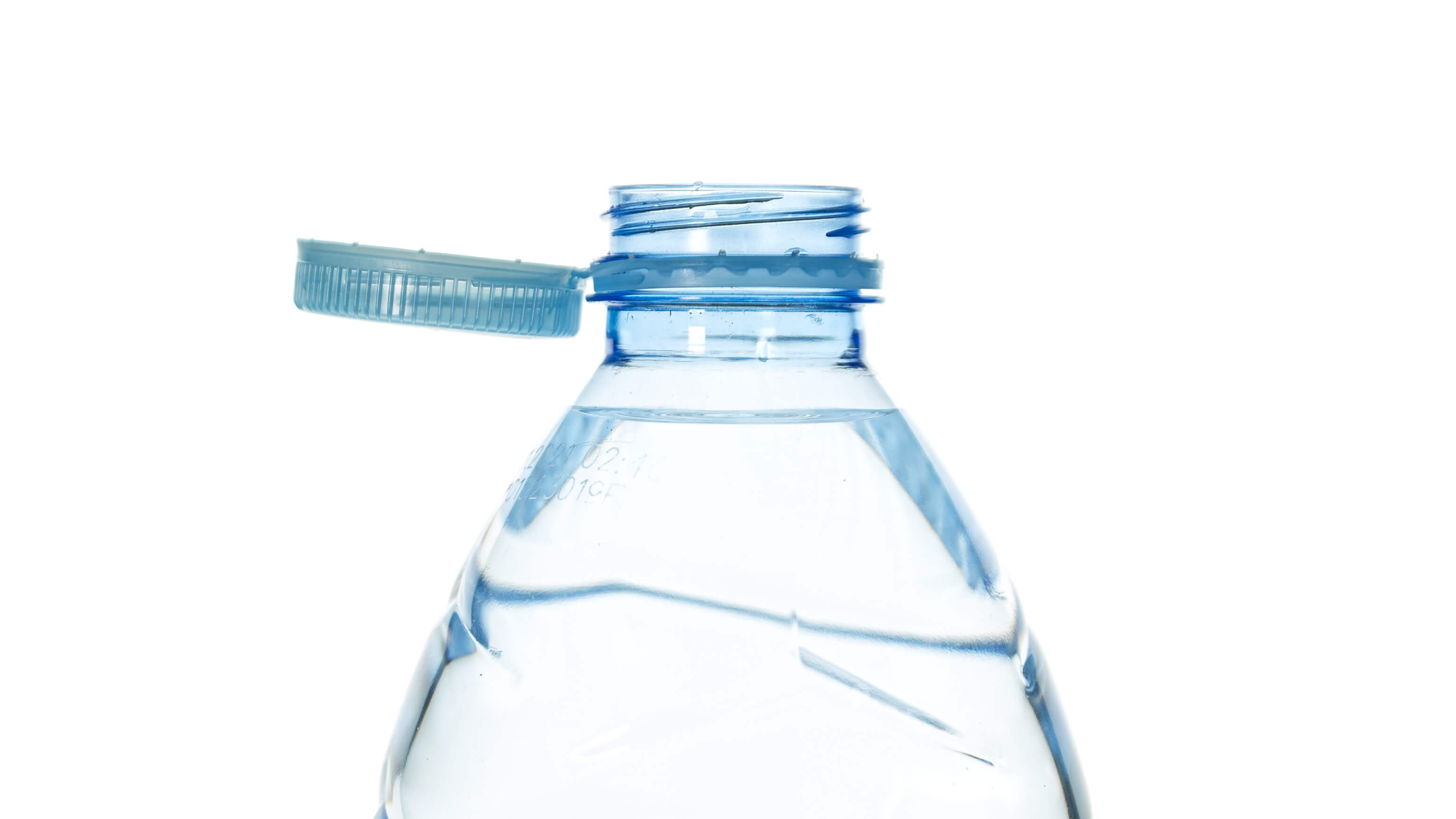Effects of the EU directive on single-use plastics on plastic closures

With the Single Use Plastics Directive 2019/904 (SUP), the European Union has set ambitious targets to reduce plastic consumption and waste. This directive has a significant impact on plastic closures, which are used in many packaging products. As a manufacturer of modern vision inspection systems for plastic packaging, we are also asked to deal with these developments so that we can provide our customers with the best possible support in implementing the requirements.
The SUP Directive aims to reduce the use of single-use plastic products and promote the transition to more sustainable alternatives. In concrete terms, this means for plastic closures:
- Plastic closures must remain permanently attached to the packaging.
- Increased recyclability: closures must be designed in such a way that they can be easily separated from the container and recycled.
- Reduced use of materials: The proportion of plastic in closures should be gradually reduced.
- Improved product take-back: Manufacturers must set up systems for taking back and recycling closures.
Tethered caps - new requirements for plastic closures
A key aspect of the SUP Directive is the introduction of so-called "tethered caps" - plastic closures that must remain permanently attached to the packaging. From July 2024, manufacturers will be obliged to use tethered caps for bottles with a volume of up to 3 liters. This is to ensure that caps can be collected and recycled together with the packaging instead of ending up in the environment. The introduction of tethered caps poses a number of challenges for producers:
- Ensuring product safety and quality: tethered caps must meet high safety standards and must not interfere with the opening and closing process of a bottle.
- Adaptation of production systems: Manufacturers must convert their injection molding machines and filling and capping systems to be able to process the new closures.
- Increased costs: According to estimates, the switch to tethered caps will result in investment costs of between 2.7 and 8.7 billion euros across the entire industry.
Challenges for inspection systems
For us as a manufacturer of inspection systems, the introduction of tethered caps also means changes that we have been working towards since 2019 and which we have been taking into account in our systems ever since:
- Changed cap geometries: Previously, caps were primarily rotationally symmetrical. The introduction of tethered caps has ensured that new, asymmetrical geometries and designs have established themselves on the market. As a result, both, the feeding and handling in the inspection system, and the software had to be adapted to these new designs.
- Material reduction: A key aspect of the EU directive is saving material. As a result, closures are becoming thinner and thinner and therefore more prone to errors in the production process. Accordingly, the process chain must be carefully adapted to the reduced material thickness.
One example of this is our form-fitting star wheel separation, which ensures perfect positioning of the closures thanks to its lateral movement. The star wheel separation does not exert pressure or friction on the closures compared to conventional separations.
- New inspections required: Depending on the design of the tethered caps, new functional or safety elements occur, such as hinges or tabs. Thanks to the use of AI, our systems are prepared to carry out a comprehensive inspection for every tethered cap design in order to always guarantee the highest product quality.
Solutions for tethered caps
Since 2019, INTRAVIS has continuously developed and delivered closure inspection systems for tethered cap applications for customers across Europe. We can therefore draw on a large number of successfully implemented projects to find an optimal solution for your new tethered caps.
You can find more information about our tethered caps solutions here.
Do you need advice on adjusting your existing inspection system or a completely new solution? Then please get in touch with our sales team using our contact form.